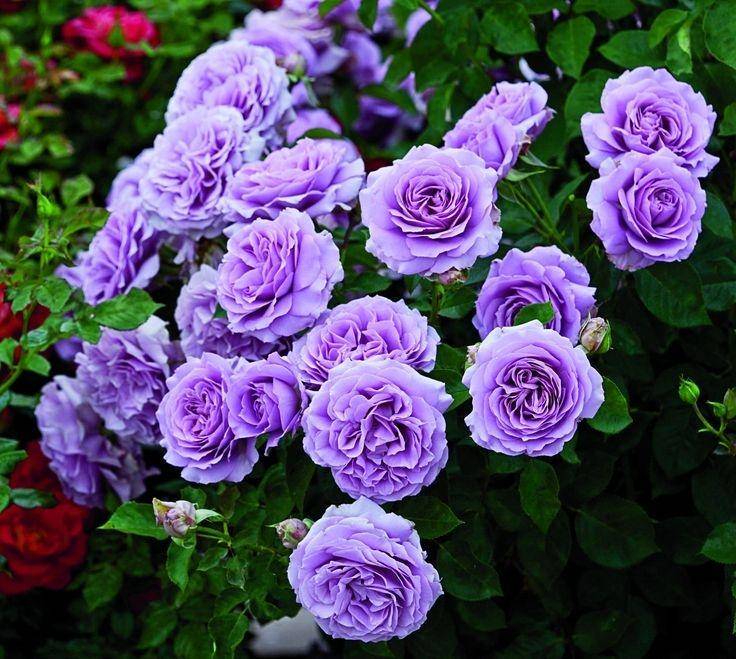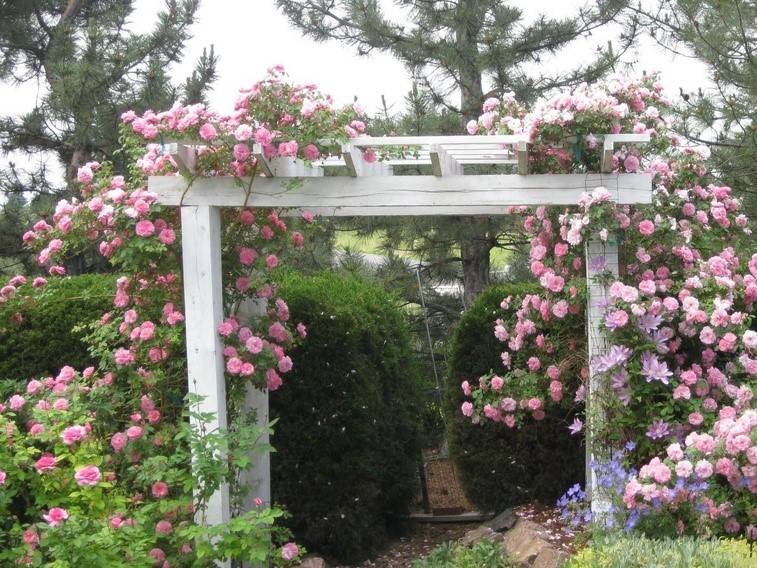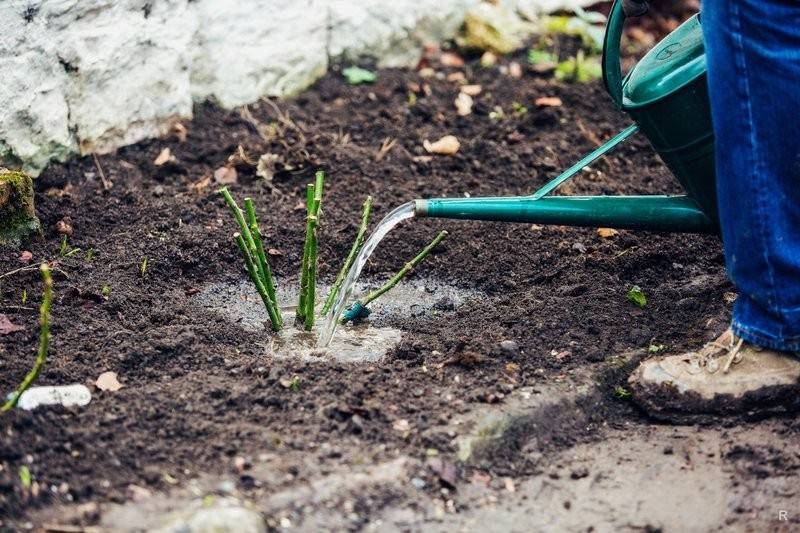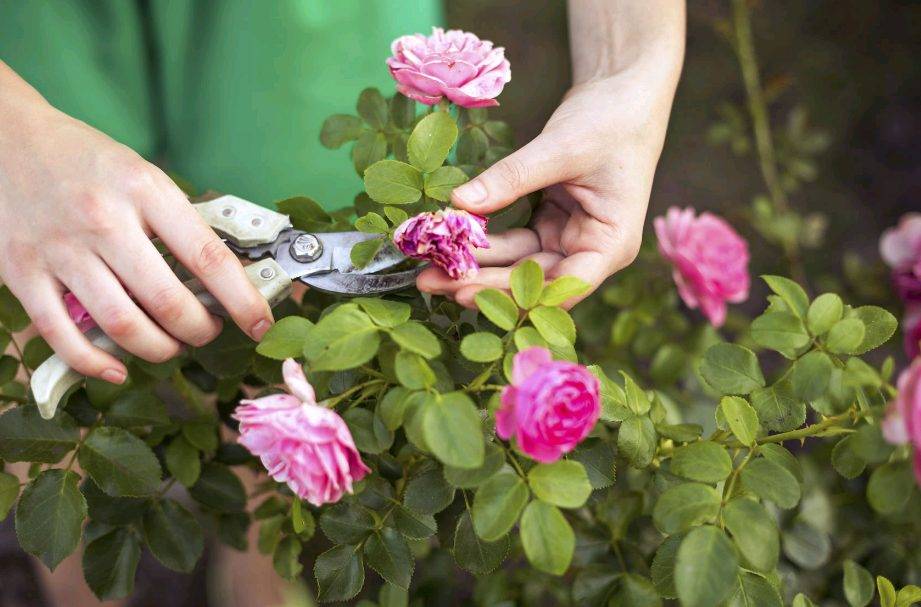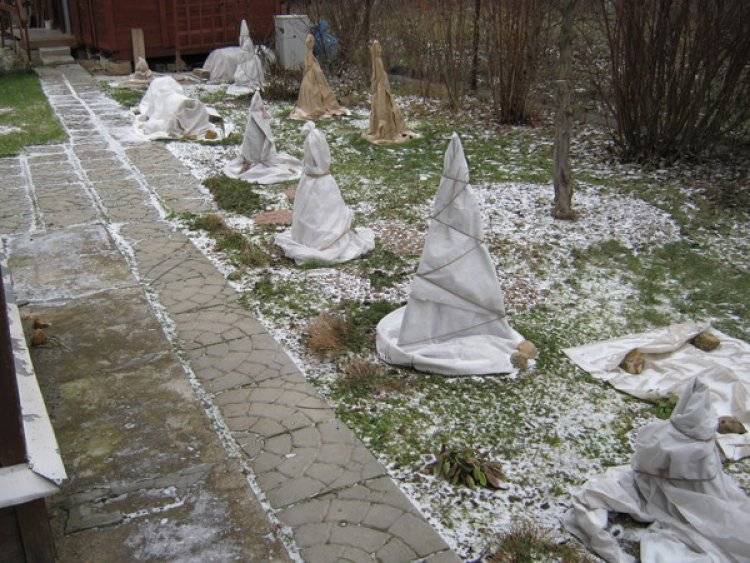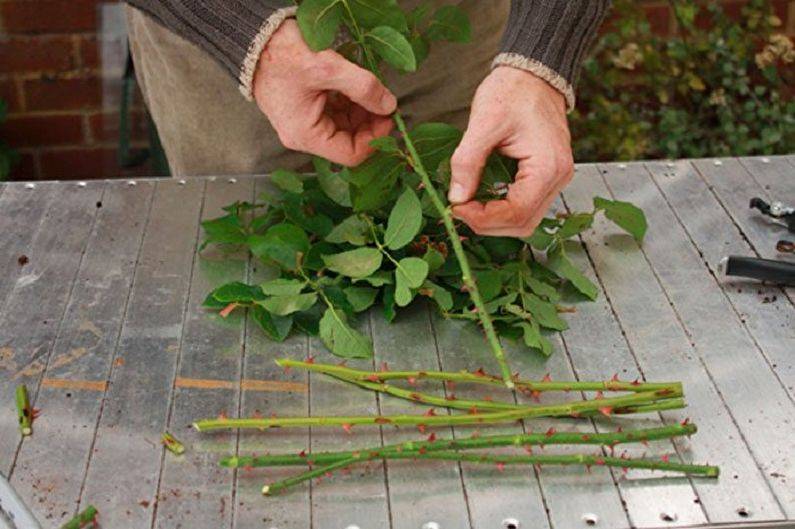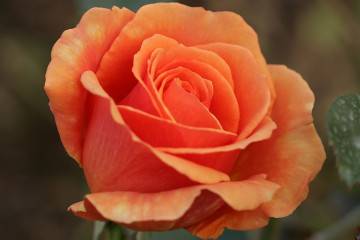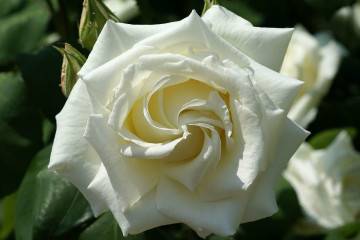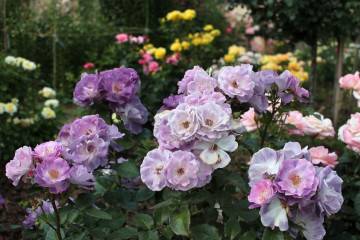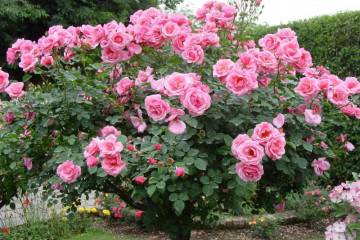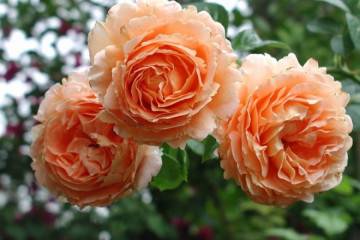Rose Blue Moon (Blue Moon) - description of the flower of the original coloring
Content:
Rose Blue Moon has become popular due to its unusual moon color. The plant variety can be grown on its own, but it is important to adhere to proper flower care.
Description of the crayon rose Blue Moon
The rose bush variety was bred by breeders in Germany, this happened in 1964. Blue Moon is translated from English as "blue moon". The flower owes its name to the unique pink-blue color of the inflorescences.
There are 2 varieties of Blue Moon rose varieties. These include:
- climbing view. Shoot height up to 4 m;
- tea-hybrid species. The height of the bush is up to 100 cm.
Blue Moon variety was awarded at the Parisian flower show "Baguen".
Advantages and disadvantages of the variety
The variety has both advantages and disadvantages. When describing a plant, the following advantages of a flower are distinguished:
- unique shade of buds;
- strong aroma of rose oil with spicy notes;
- flowering several times over the summer;
- resistance to black spot and powdery mildew;
- good frost resistance;
- a small number of thorns;
- the ability to use flowers in landscape design.
The disadvantages include:
- the need for proper care;
- poor insect tolerance;
- sensitivity to weather conditions.
The Blue Moon rose variety has more advantages than disadvantages. The plant will delight with the beauty of its flowers, if properly cared for.
Use in landscape design
Lilac flowers are perfect for landscape design of a summer cottage. Thanks to the climbing branches of a climbing plant, they can be used to decorate a gazebo, fence or wall of the house. Rose Blue Moon is suitable for creating arches of flowers, decorating trellises and other vertical structures.
Lush bushes of hybrid tea roses look good in flower beds surrounded by other flowers. They are able to decorate any site.
Growing a flower and proper planting in open ground
For planting a climbing plant in a summer cottage, it is better to use seedlings. A stem with roots allows you to get a rose bush with buds faster. The main thing is to choose seedlings without damage. The stem and roots must not be too dry or they will not grow. Before placing them in the soil, you need to choose the right planting site and prepare the rose and the earth for this process.
Landing time
You need to plant a flower at the very beginning of May. This is due to the fact that in the springtime outside, the temperature is acceptable for planting and the ground is warm enough. The plant will quickly take root in the soil and begin to grow actively.
Seat selection
The landing site for Blue Moon should be comfortable. The best option is when the sun shines on the flower in the morning and evening, and in the middle of the day it is in the shade. The sun's rays can damage the surface of the delicate rose petals.
The place should be free of strong winds. Avoid planting in low-lying areas where water can accumulate. Due to the high humidity, the roots begin to rot.
Preparing the soil and flower for planting
In order for the flower to take root and begin to grow rapidly, you need to prepare the soil and plant for planting. The roots of the seedling are placed in a container of water for 4 hours so that they are saturated with moisture. This will help straighten them out. The damaged parts are removed, and the cut is treated with wood ash.
The soil does not have to be hard. It needs to be loosened with a special hoe up to one and a half meters deep.
Planting procedure step by step
For the correct planting of Blue Moon seedlings in the soil, follow the step-by-step instructions:
- Measure the height of the root system.
- Dig a hole in the ground with a diameter of 90 cm, taking into account the length of the roots and drainage layer (6 cm).
- Put expanded clay, crushed stone or gravel (2 parts) on the bottom and cover with sand (2 parts).
- Place manure (3 parts), mineral fertilizing (200 g) and wood ash (1 glass) on top.
- Cover with a little earth.
- Place a rose bush sapling in the center of the groove, carefully spreading the roots.
- Check the vaccination site. It should rise 4 cm above the soil level.
- Cover the seedling with earth, tamping it well. The neck of the root system should be 3 cm below the soil.
- Water and mulch the ground.
If all steps are completed, the plant will take root and begin active growth.
Plant care
The condition of the rose bush and the activity of flowering depend on the care, therefore, the growing process must be given special attention. Caring for the plant consists of watering, feeding, improving the quality of the soil, pruning, replanting and sheltering for the winter.
Watering rules and humidity
The rose needs regular, abundant watering. Prefers moderate humidity up to 50%. To prevent the plant from drying out, you need to adhere to certain rules:
- watering in the evening;
- use warm water. Standing water is suitable for irrigation;
- maintain a balance. There should not be an excess of moisture in the soil, otherwise the root system will rot. Dryness should also be avoided so that the bush blooms faster;
- the regularity of watering depends on external conditions - air temperature and humidity;
- watered only under the bush. Leaves should not be exposed to water.
Enriching the plant with moisture is one of the most important components of care. Watering rules will help keep the bush healthy.
Top dressing and soil quality
It is preferable to grow Blue Moon on fertile black soil. If this is not possible, then loamy soil is suitable. The acidity of the substrate should be between 6 and 6.5 pH. Peat or humus will help to increase its level, and ash will reduce the excess.
During the growing season, 6 fertilizers are used for the plant. The first time the plant is fed with the arrival of heat. It must contain nitrogen in order to activate the growth of greenery. Subsequent times, apply a special dressing for roses.
Pruning and replanting
A rose is pruned several times a year. In the spring they are shortened by 20 cm. 5 buds should remain on each shoot. Parts damaged after winter are removed completely. Pruning stimulates bud formation and flowering.
The next pruning is done in the fall, when the bush is being prepared for winter. The branches are shortened by 1/3. Shoots that could not mature over the summer are removed.
In addition to spring and autumn pruning, shoots are removed depending on the age of the bush. In the first year of flower growth, damaged areas of the shoots are removed from it. In subsequent years, weakened branches and parts with fungi are cut off. In the side shoots, which are on the main stems, cut off half. So that the rose bush is not too voluminous, and the flowering does not stop, several old stems need to be removed from it.
The bush is transplanted in early May or September. The procedure is not carried out in summer. When transplanting a flowering bush, all inflorescences should be removed from it. From the hole where the flower is placed, you need to remove all the roots of the weeds. Drainage, nutrient soil with the addition of compost is placed on the bottom. In this form, the pit is left for 2 weeks, after which a rose bush is transplanted into it.
Before digging a bush, the ground under it is watered to make it easier to remove. The stems are tied with a rope for their safety. Dig it out carefully so as not to spoil the roots. It is necessary to transfer the rose to a new place together with an earthen lump, having previously tied it with a rope. After finishing the transplant, you should water the bush. After that, replanting it is not recommended for several years.
Features of wintering a flower
Rose Blue Moon is able to withstand frost down to -23 ° C. Extreme cold is stressful for the plant and can negatively affect it. Therefore, with the onset of frost, you need to take care of protecting the flower. Sprinkle the root collar with manure and dry substrate.
With the arrival of severe frosts, you should remove part of the stems of the bush, put the branches down on the spruce branches. The shoots must be preserved until next year, flowers will form on them. Then the plant is insulated from above using the same spruce branches and a special material for covering the beds.
Blooming rose
The period of activity of the Moon Blue rose begins in June. It blooms and buds several times over the summer. Flowering lasts until autumn, when the first frosts come. This time is the dormant period of the plant. It lasts all winter until spring. In the cold season, the rose bush is under a covering material that protects it from frost.
Care during and after flowering
Much attention should be paid to caring for the plant. During the flowering period, it must be fed with dressings that contain nutrients. This has a beneficial effect on the formation of new buds. After each watering, it is important to loosen the soil so that oxygen can flow to the roots. After that, the ground around the flower is mulched.
After flowering, roses are engaged in pruning peduncles that have already faded, and damaged shoots. An important place is given to loosening the soil and removing all weeds.
Possible reasons for the termination of flowering
If the buds of a Blue Moon rose do not ripen, there may be several reasons. Flowering depends on:
- landing sites. In a highly shaded place, the rose will not bloom. She needs an open area, but without the scorching sun;
- trimming. Incorrect shoot removal negatively affects the condition of the flower. You can not do too deep pruning, remove branches with all the buds;
- top dressing. The plant can weaken if not fertilized. They restore the strength of the bush after winter. A large amount of nitrogen in the top dressing can inhibit bud formation.
In order for a rose to bloom, it needs to be properly cared for.
Flower propagation
Reproduction of the Blue Moon rose is best done in the fall. This is due to the fact that the most popular way of growing new flowers is cuttings, which is done at the end of October. At the same time, the shoots are cut off. By spring, the plant will be ready for planting in the soil at their summer cottage. The main thing is not to freeze it in winter. For this, the rose should be kept inside a warm house.
If you have a Blue Moon rose bush on the site, you can independently reproduce the plant and get new flowers. They retain all the characteristics of the rose variety. For this, one of several methods of vegetation is used:
- layering. The method is used for a climbing rose Blue Moon. The shoot from the side is placed in a depression in the soil and sprinkled with earth. To prevent it from returning to its original position, it is fixed with a metal bracket. The first roots will appear in the fall. In spring, the shoot can be separated from the bush and planted in the ground;
- grafting. The most convenient breeding method for a hybrid tea rose. A healthy and strong shoot is cut off from the bush and planted in the ground. Watered on top and covered with a special material for the beds. In the spring, they are removed and transplanted to the chosen place. Another option is to plant a tea rose shoot in a pot to grow at home until spring, then transplant it into the ground;
- dividing the bush. Suitable for all types of roses. The bush in the spring, before the buds ripen, is divided into 2 equal parts. They are planted separately in the soil, growing roses from them.
Using one of the listed rose propagation methods, you can get a new shrub with beautiful pink-blue flowers.
Diseases, pests and ways to control them
Rose Blue Moon can be attacked by insects. Dangerous pests include:
- penny. Forms white foam seals on the leaf surface. To get rid of the insect, the lumps need to be squeezed with your fingers;
- rose-colored sawfly. Young branches begin to hang down. Their form is modified;
- green rose aphid. Leaves and shoots curl. Green dots are visible on their surface;
- rose leaf roll. The leaves are curled into a tube. They need to be collected and disposed of;
- spider mite. You can recognize the pest by the white cobweb on the surface of the flower and white dots. It affects the plant in hot weather.
It is necessary to get rid of insect pests with the help of insecticides. The most popular remedies are alatar, chlorophos, aktara, karbofos, spark, actellik.
Rose Moon Blue can become infected with diseases that are dangerous for her. These include:
- black spot and powdery mildew. Usually the rose is not susceptible to them, however, in cold weather, the flower can become infected;
- rust. Orange spots appear on the leaves;
- peronosporosis. Infection is manifested by red stains on the leaves, after which they fall off;
- gray rot. Yellow-gray spots with villi appear on the plant.
All damaged leaves must be collected and disposed of. Copper sulfate, topaz, epin, prognosis will help to get rid of black spot and powdery mildew. "
For other diseases, you need to use Bordeaux liquid (2%), soap solution and preparations of foundationol, phytosporin, strobe, tilt, euparen.
Blue Moon rose will decorate the summer cottage with its pink and blue flowers. In order for it to please with a bright appearance, it must be properly looked after and protected from diseases, insect pests.
